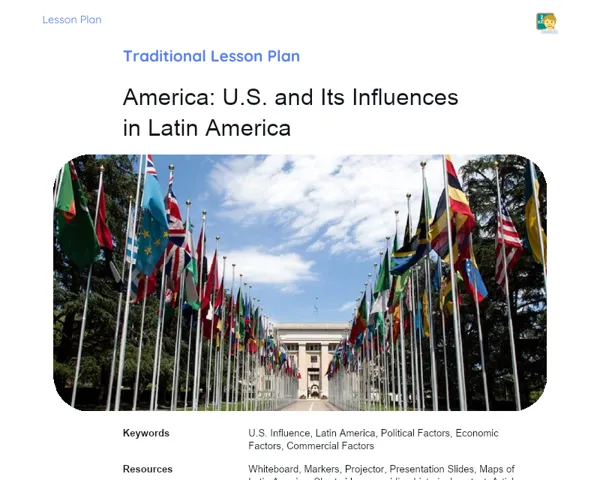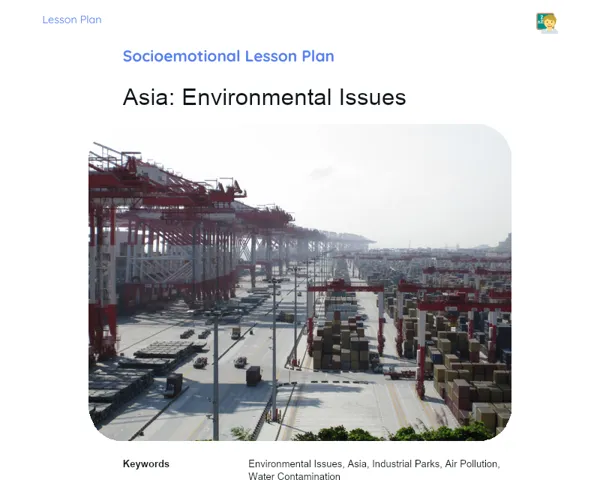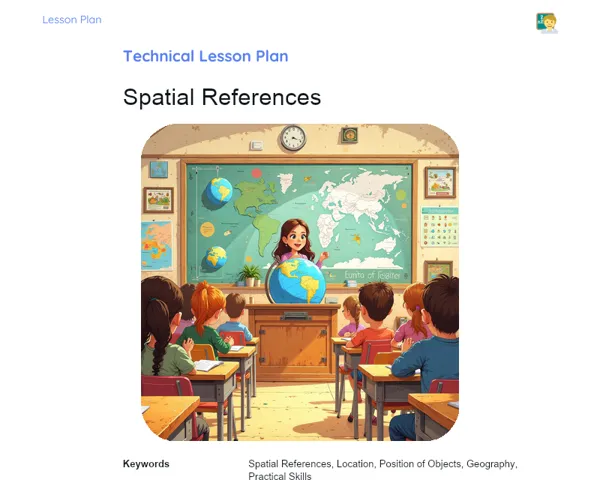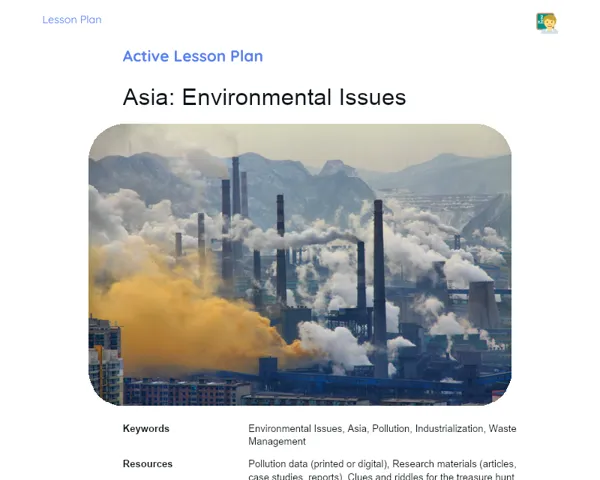Lesson Plan | Lesson Plan Tradisional | Rural and Urban Relationship
| Keywords | Rural, Urban, Interdependence, Food Production, Consumption, Transportation, Logistics, Agriculture, Livestock, Commerce, Services |
| Resources | Pictures or illustrative images showcasing rural and urban areas, Whiteboard and markers for visual aids, Projector or TV for presenting images, Paper and colored pencils for drawing activities, Notebooks for students to take notes |
Objectives
Duration: (10 - 15 minutes)
This segment of the lesson plan aims to introduce students to the concept of 'Rural and Urban Relationship', laying a solid and comprehensible groundwork for grasping the specifics and connections between these two environments. By stating the main objectives, the lesson is guided effectively, preparing students to absorb the content that will be presented in an engaging manner.
Objectives Utama:
1. Identify the differences and unique features of rural and urban areas.
2. Explore the interdependence between rural and urban locations, particularly regarding food production and consumption.
Introduction
Duration: (10 - 15 minutes)
🎯 Purpose: This part of the lesson plan introduces students to the theme of 'Rural and Urban Relationship', providing a clear understanding of the specifics and interdependence of these areas. By outlining the primary objectives, the lesson’s focus is sharpened, and students are set up to engage with the presented material.
Did you know?
📚 Curiosity: Did you know that a majority of the food we enjoy in cities, such as fruits, vegetables, and meats, comes from rural regions? Additionally, many of the clothes we wear are made from materials sourced from farms? Without these rural areas, city life would be quite challenging and different.
Contextualization
🌍 Context: Begin the class by explaining that rural and urban areas are essential for human existence. Rural regions have vast lands where crops are grown and animals are raised. Cities, on the other hand, are filled with buildings, people, businesses, and various services. Use photos or visuals that clearly depict these contrasts. Emphasize that each area has its unique traits and that they depend on one another to meet various needs.
Concepts
Duration: (30 - 40 minutes)
🎯 Purpose: This phase of the lesson plan aims to deepen understanding of the characteristics and interdependence between rural and urban regions. By addressing specific topics and prompting questions for class discussion, the goal is to enhance students’ knowledge and stimulate critical thinking about the significance of this relationship.
Relevant Topics
1. 🏙️ Differences between Rural and Urban Areas: Discuss the core characteristics of rural and urban zones. Generally, rural areas feature more open spaces, lower population density, and numerous activities linked to farming and animal husbandry. Urban regions are characterised by more buildings, higher population density, and diverse commercial and service options.
2. 🚜 Production in Rural Areas: Elaborate on how food and raw material production takes place in rural settings. Discuss the cultivation of crops, vegetables, and animal raising. Explain that these products play a vital role in sustaining city life.
3. 🏪 Consumption in Urban Areas: Explain how goods produced in rural areas are brought to urban settings and consumed. Address the significance of logistics and transportation in ensuring availability of food and other products in local shops and markets.
4. 🔄 Interdependence between Rural and Urban Areas: Illustrate the mutual reliance between the two. Without rural areas, cities would lack fresh produce and raw materials; conversely, rural zones wouldn’t have markets to sell their goods or obtain services and products not locally produced.
To Reinforce Learning
1. 1. What are the main characteristics distinguishing rural and urban regions?
2. 2. How do food items from rural areas find their way into urban markets?
3. 3. Why is it vital for rural and urban areas to collaborate closely?
Feedback
Duration: (20 - 25 minutes)
🎯 Purpose: The goal of this section is to ensure that students reinforce their understanding through discussion and contemplation on presented questions. By involving students in active dialogue, the aim is to foster a deeper and more enduring appreciation of the links between rural and urban areas, underscoring the significance of this relationship in their lives.
Diskusi Concepts
1. 🗣️ Discussion of the Questions: 2. 1. What are the main characteristics distinguishing rural and urban regions? 3. - Rural areas are marked by expansive lands, a smaller population, and various agricultural activities. Urban areas, conversely, are characterised by numerous buildings, denser populations, and a range of commerce and services. 4. 2. How do food items from rural areas find their way into urban markets? 5. - Food is moved to urban areas via trucks and other transport methods. The logistics process involves the storage and distribution of these items to supermarkets, markets, and additional sale points in urban locales. 6. 3. Why is it vital for rural and urban areas to collaborate closely? 7. - Rural areas supply fresh food and critical raw materials for urban living, while cities offer a marketplace for consumers and services that rural areas lack. Such interdependence is essential for the prosperity of both spaces.
Engaging Students
1. 🤔 Student Engagement: 2. 1. Can you name any food items that you consume regularly that originate from rural areas? 3. 2. How do you envision life in a city would look like without agricultural contributions from rural areas? 4. 3. What services do you think are most vital for rural areas that come from the city? What about the other way around? 5. 4. Ask students if they have visited a farm or a rural area and what differences they noticed compared to city life. 6. 5. Invite students to draw a scene that illustrates the relationship between rural and urban areas.
Conclusion
Duration: (10 - 15 minutes)
The goal of this section of the lesson plan is to review and solidify the key points discussed, deepening students' comprehension of the connections between rural and urban areas. This phase also aims to show the practical implications of the content on their everyday life.
Summary
['Rural areas feature broad lands, a smaller population, and agriculture-related activities.', 'Urban areas are filled with buildings, have higher population density, and various commercial and service ventures.', 'Food production in rural settings encompasses the growing of fruits, vegetables, and raising of livestock.', 'These products are transported to urban spaces, where they are consumed.', 'Rural and urban areas are interconnected; rural zones provide food and raw materials, while urban settings offer a marketplace and services.']
Connection
The lesson linked theoretical concepts with practical applications by showing how foods produced in rural settings reach urban areas and are enjoyed by their residents. Furthermore, providing real-life examples of transportation and logistics helped students appreciate the importance of this interdependence in their daily lives.
Theme Relevance
Understanding the relationship between rural and urban areas is critical, as it illustrates how the production of food and raw materials directly affects urban life. Additionally, it highlights the need for collaboration to ensure the well-being and quality of life in both rural and urban contexts.



